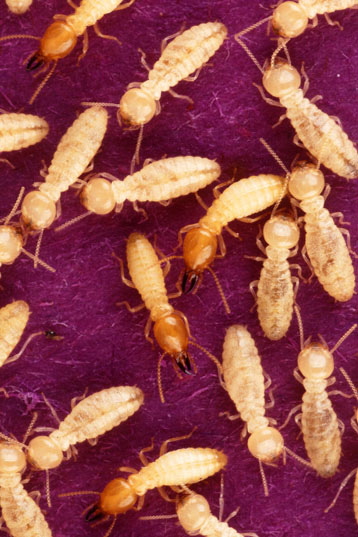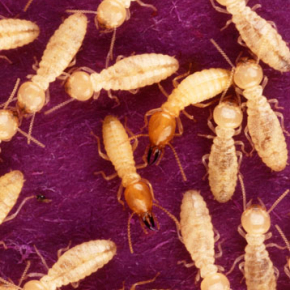
Invasive insects: an underestimated cost to the world economy
Invasive insects cause at least 69 billion euros of damage per annum worldwide. Such is the estimation made by an international research team led by Franck Courchamp, CNRS research director at Laboratoire Ecologie, Systématique et Evolution (Université Paris-Sud/CNRS/AgroParisTech) and notably including entomologists from IRD Montpellier and a CNRS economist. Their study brought together the largest database ever developed on economic damage attributable to invasive insects worldwide. Covering damage to goods and services, health care costs and agricultural losses, this study, conducted with the support of ANR and the BNP Paribas Foundation, considered 737 articles, books and reports. This work was published in Nature Communications on 4 October 2016.
Why study insects? For thousands of years, insects have been responsible for the spread of diseases in humans and livestock, and cause considerable damage on many levels: from attacks on crops and stocks, through the destruction of infrastructure, to the devastation of forests, altering and weakening ecosystems. In the living world, insects alone (about 2.5 million species) are probably the group responsible for the greatest expense. In addition, they are among the most aggressive invasive species: 87% of 2500 terrestrial invertebrates that have colonized new territories are insects.
Underestimated damage
The scientists estimated the minimum economic damage caused by invasive insects to be 69 billion euros per year. Of the insects studied, the Formosan termite 1 (Coptotermes formosanus) is one of the most destructive, causing over 26.7 billion euros of damage per year in the world. However, according to the research group, this estimate is based on a study that was insufficiently documented. Studies that were more soundly based (considered reproducible by the scientists) also put the cabbage moth 2 (Plutella xylostella), with a cost of 4.1 billion euros per year, in a high-ranking position, like the brown spruce longhorn beetle 3 (Tetropium fuscum), which costs 4 billion euros in Canada alone.
Furthermore, according to this study, North America suffers the largest financial losses, at 24.5 billion euros a year, while Europe is currently at only 3.2 billion euros per year. This difference, however, can be explained more by a lack of evaluation sources than by a difference in exposure to these dangers. Thus, according to the researchers, the total annual cost estimation of 69 billion euros is largely underevaluated. Many parts of the world do not offer enough economic data to produce an accurate estimate, which is therefore minimized. In addition, the research team focused on the study of the ten most costly invasive species, not counting the very large number that cause less damage. Finally, considering the estimated values of ecosystem services on a global scale (hundreds of billions of dollars for crop pollination alone), the disruption caused by invasive insects could reach a level far beyond the current estimate.
Health and agriculture are the most affected
Insects overall take a heavy toll on agriculture by consuming 40% of the harvest (enough to feed one billion people).
As for health, the total cost attributable to invasive insects exceeds 6.1 billion euros per year (without counting malaria, Zika virus, or economic impacts on tourism or productivity, etc.). From a geographic point of view, the regions of the world where medical expenses related to invasive insects prove to be the greatest are Asia (2.55 billion euros a year), North America (1.85 billion euros per year) and the whole of Central and South America (1.66 billion euros a year). Among the diseases that have the greatest economic impact, we firstly find dengue fever, for which the costs account for 84% of the 6.1 billion euros.
According to the authors, greater vigilance and the development of procedures to respond to biological invasions would save society tens of billions of euros. These preventive measures could divide the cost of diseases caused by mosquitoes by at least tenfold.
French laboratories involved in this study
- laboratoire Ecologie, systématique et évolution (Université Paris-Sud/CNRS/AgroParisTech)
- Laboratoire montpelliérain d'économie théorique et appliquée (CNRS/ Université de Montpellier/Inra)
- laboratoire Maladies infectieuses et vecteurs : écologie, génétique, évolution et contrôle (CNRS/IRD/Université de Montpellier)
- laboratoire Biologie des organismes et écosystèmes aquatiques (CNRS/MNHN/IRD/UPMC/Université Caen Normandie)

Formosan termites (Coptotermes formosanus)

Cabbage moth (Plutella xylostella)
- 1The damage it causes and its remarkable capacity for spreading put it in top position on the IUCN list of the most invasive species. This species has never been eradicated from any place where it has become established. Its present distribution suggests that, with climate change, it could potentially invade Europe (source InvaCost).
- 2This moth causes considerable damage to cabbages, rendering them unsalable (source INRA).
- 3This beetle lays its eggs in crevices in the bark of pine and spruce trees (source INRA).
Massive yet grossly underestimated global costs of invasive insects, Corey J.A. Bradshaw, Boris Leroy, Céline Bellard, David Roiz, Céline Albert, Alice Fournier, Morgane Barbet-Massin, Jean-Michel Salles, Frédéric Simard & Franck Courchamp. Nature Communications, 4 October 2016. DOI: 10.1038/ncomms12986
View web site


